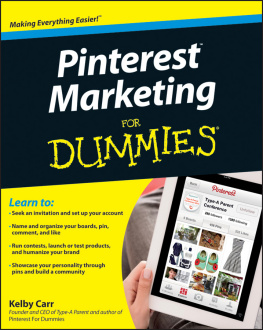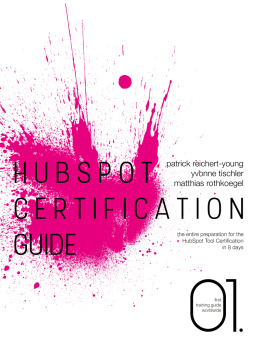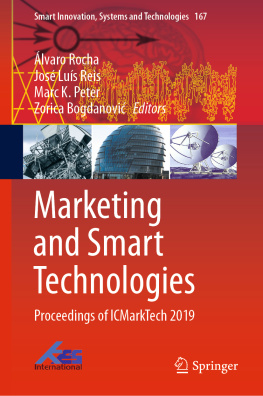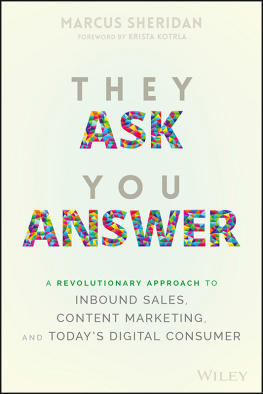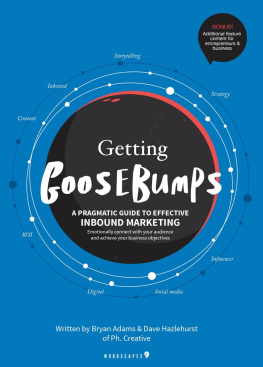INBOUND MARKETING AND SEO
INSIGHTS FROM
THE MOZ BLOG
Rand Fishkin and
Thomas Hgenhaven

This edition first published 2013
2013 SEOMoz
Registered office
John Wiley & Sons Ltd, The Atrium, Southern Gate, Chichester, West Sussex, PO19 8SQ, United Kingdom
For details of our global editorial offices, for customer services and for information about how to apply for permission to reuse the copyright material in this book please see our website at www.wiley.com.
The right of the author to be identified as the author of this work has been asserted in accordance with the Copyright, Designs and Patents Act 1988.
All rights reserved. No part of this publication may be reproduced, stored in a retrieval system, or transmitted, in any form or by any means, electronic, mechanical, photocopying, recording or otherwise, except as permitted by the UK Copyright, Designs and Patents Act 1988, without the prior permission of the publisher.
Wiley also publishes its books in a variety of electronic formats. Some content that appears in print may not be available in electronic books.
Designations used by companies to distinguish their products are often claimed as trademarks. All brand names and product names used in this book are trade names, service marks, trademarks or registered trademarks of their respective owners. The publisher is not associated with any product or vendor mentioned in this book. This publication is designed to provide accurate and authoritative information in regard to the subject matter covered. It is sold on the understanding that the publisher is not engaged in rendering professional services. If professional advice or other expert assistance is required, the services of a competent professional should be sought.
Trademarks: Wiley and the Wiley logo are trademarks or registered trademarks of John Wiley and Sons, Inc. and/ or its affiliates in the United States and/or other countries, and may not be used without written permission. All other trademarks are the property of their respective owners. John Wiley & Sons, Ltd. is not associated with any product or vendor mentioned in the book.
A catalogue record for this book is available from the British Library.
ISBN 978-1-118-55155-4 (pbk); ISBN 978-1-118-55156-1 (ebk);
ISBN 978-1-118-55157-8 (ebk); ISBN 978-1-118-55158-5 (ebk)
Set in 10 pt. Minion Pro by Indianapolis Composition Services
Printed in the United States by Bind-Rite
Dedication
To the Moz communityYou rock! Thank you for helping to build an
extraordinary organization.
To the remarkable writers and marketers who helped make this book possibleThank you for your generous contributions.
Special thanks to Ashley Tate and Christy CorrellYou made this book possible.
Rand and Thomas
To the Moz teamMy thanks; I feel lucky, thrilled, and humbled to share this
journey with you.
To GeraldineI'm sorry for all the nights blogging and writing have kept me away from you; your love and support means the world to me.
Rand
To MarieFor making everything look brighter, day after day.
Thomas
Publisher's Acknowledgements
Some of the people who helped bring this book to market include the following:
Editorial and Production
VP Consumer and Technology Publishing Director: Michelle Leete
Associate DirectorBook Content Management: Martin Tribe
Associate Publisher: Chris Webb
Executive Commissioning Editor: Craig Smith
Associate Commissioning Editor: Ellie Scott
Editorial Manager: Jodi Jensen
Senior Project Editor: Sara Shlaer
Moz Content Editor: Christy Correll
Moz Project Manager: Ashley Tate
Editorial Assistant: Annie Sullivan
Marketing
Associate Marketing Director: Louise Breinholt
Marketing Manager: Lorna Mein
Senior Marketing Executive: Kate Parrett
Marketing Assistant: Tash Lee
Composition Services
Senior Project Coordinator: Kristie Rees
Compositor: Erin Zeltner
Proofreaders: Melissa Cossell, Wordsmith Editorial
Indexer: BIM Indexing & Proofreading Services
Proceeds
All proceeds of this book will be donated to Vittana (www.vittana.org).
Vittana's mission is to graduate a generation beyond poverty through the power of
education. Vitanna enables anyone with $25 to lend directly to ambitious students in
the developing world. 100 percent of lender money goes directly to the students, and
more than 99 percent of students repay their loans upon graduation.
Introduction
By Rand Fishkin and Thomas Hgenhaven
The term inbound marketing was first used by Brian Halligan and Dharmesh Shah in their seminal 2009 book, but the concept has been around much longer. As far back as 1999, Seth Godin referred to the same concept under a different name in his blog: Permission marketing is the privilege (not the right) of delivering anticipated, personal, and relevant messages to people who actually want to get them.
Over the past few years, many marketers who focus on organic channels like search engine optimization (SEO), social media, and content marketing have started using the phrase inbound marketing to describe the combination of these channels in their roles and responsibilities.
So why are marketers now turning to inbound marketing? Reasons abound, but two in particular are both timely and relevant. First, Googlethe world leader in search, with more than 90 percent of the global market sharehas evolved its algorithmic considerations massively in the past five years. Google has rolled out new types of search results, cracked down on spam, upgraded its ability to detect and remove low-quality content, become faster and fresher, dramatically dampened many historic SEO factors, and renewed its focus on promoting great brands that produce superlative web content.
Second, practitioners of SEO have evolved. We realize that SEO is a tactic, not a strategy. We realize SEO needs to be used as part of a broader set of marketing tools. In order to succeed in SEO, a multichannel approach is necessary. This book is all about how to perform in a new era of inbound marketing.
SEO Is Changing
Search and SEO are changing. Google is hitting suspicious-looking link networks, devaluing directories, and increasingly penalizing sites with highly dubious link profiles. Underhanded tactics to rank well in the search engine results pages (SERPs) no longer work.
Optimizing a site used to be about getting to the number one spot in a SERP and staying there. Ranking number one is no longer the only important factor. Click distribution is different than it used to be; it's influenced by rich snippets like star ratings, number of reviews, price, author photo, video preview, publication date, and social annotations. Optimizing your author photo might increase click-through rate (CTR) more than moving up one or two places in the search results will.
Moreover, Google wants the fat head keywordsthe small group of keywords that typically drive the most trafficto themselves. Try searching for credit card offers, flight tickets, and new movie titles. The SERPs are filled with other Google-owned products, which makes sense for its business. This makes it more important than ever before for you to have keywords in the chunky middle (more descriptive terms that drive fewer visits individually, but large amounts of traffic overall) and the long tail (the many, more specific terms that may only drive a few visits each, but can drive a lot of traffic in aggregate).


